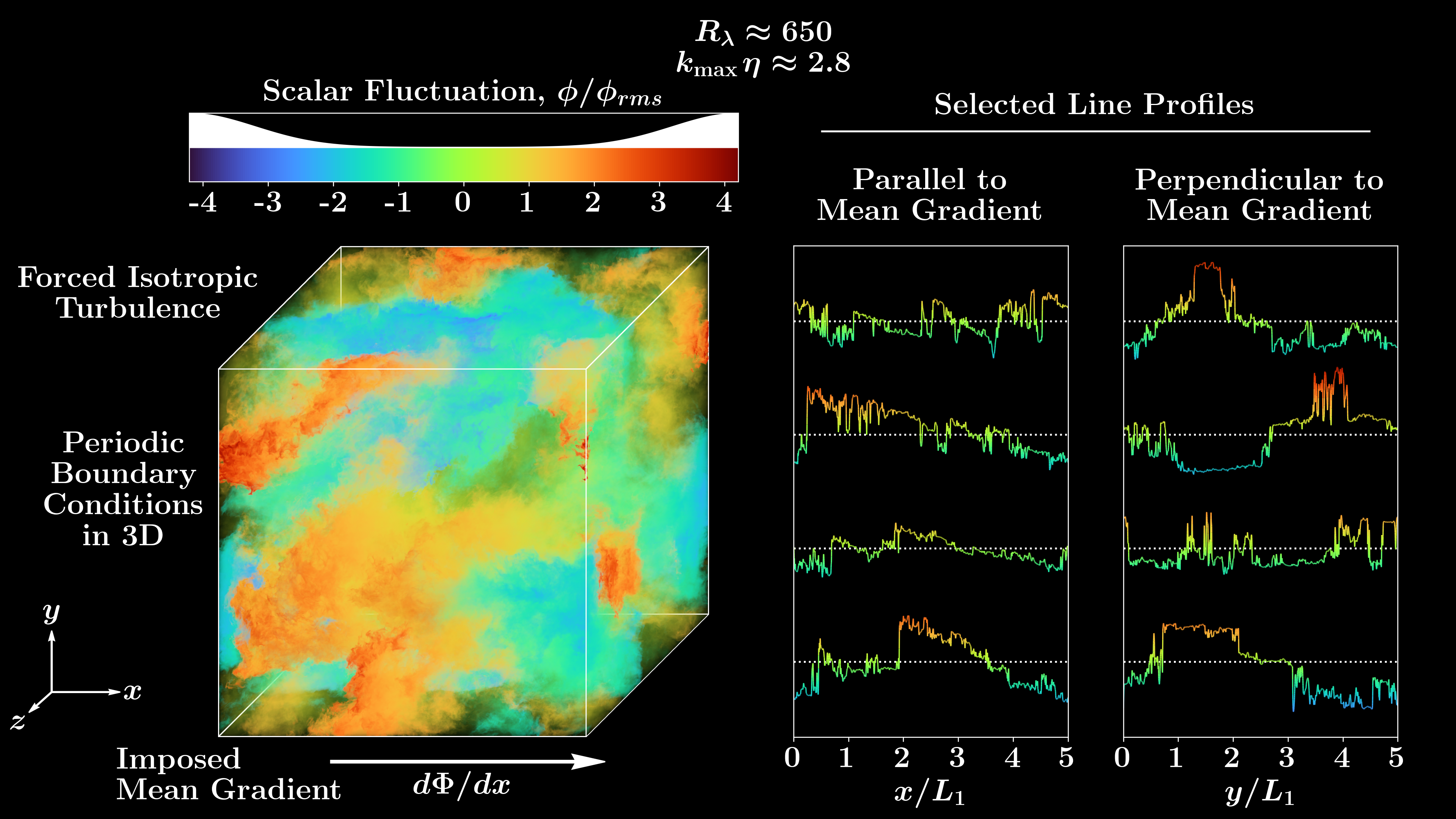Forced HIT
Forced Homogeneous Isotropic Turbulence DNS with 3 Passive Scalars

Description
These snapshots are from a series of Direct Numerical Simulations (DNS) of passive scalar mixing in three-dimensional homogeneous isotropic turbulence, at grid resolution up to \(16384^3\) [1], performed using the exascale supercomputer named Frontier at Oak Ridge National Laboratory. The velocity fluctuations evolve according to the incompressible Navier-Stokes equations, while the scalar fluctuations follow an advection-diffusion equation, with a source term representing an imposed mean scalar gradient. The numerical methods employed are standard Fourier pseudo-spectral in space, second order in time, with aliasing errors controlled by a combination of phase shifting and truncation [2]. The velocity field is forced by keeping the values of the energy spectrum in the three lowest wavenumber shells constant [3].
The simulations begin from previously evolved velocity fields and are first run at a modest resolution of \(k_{max}\eta \approx 1.4\) (where \(k_{max} = \sqrt 2 N/3\) is the highest wavenumber resolved on an \(N^3\) grid and \(\eta\) is the Kolmogorov length scale) until the scalar fields reach statistical stationarity. The grid is then refined to a higher resolution of \(k_{max} η \approx 2.8\), and the simulation proceeds until the smallest scales fully adjust. Snapshots at this highest resolution have been collected for Taylor-scale Reynolds numbers \(Re_\lambda \approx 390, 650, 1000 \text{ and } 1600\). The Schmidt number is \(1.0\) in all cases. Each snapshot captures the complete flow field — including velocity, pressure, and three passive scalars — at a single instant in time. The three scalars are each subjected to a uniform mean gradient along a different coordinate direction.
Quick Info
Links to different cases
| ID | Re$_{\lambda}$ | Grid | Size (GB) | Links |
|---|---|---|---|---|
| 0 | 390 | 20483 | 225` |
|
| 1 | 650 | 40963 | 1.8 TB |
|
References
[1] D. L. Dotson, P. K. Yeung, and K. R. Sreenivasan. A Study of passive scalar turbulence at high Reynolds numbers enabled by exascale computing. Bull. Am. Phys. Soc.
https://meetings.aps.org/Meeting/DFD24/Session/R37.00003, 2024.
[2] R. S. Rogallo. Numerical experiments in homogeneous turbulence. NASA TM 81315, NASA Ames Research Center, Moffett Field, CA., 1981.
[3] D. A. Donzis and P. K. Yeung. Resolution effects and scaling in numerical simulations of passive
scalar mixing in turbulence. Physica D, 239:1278–1287, 2010.